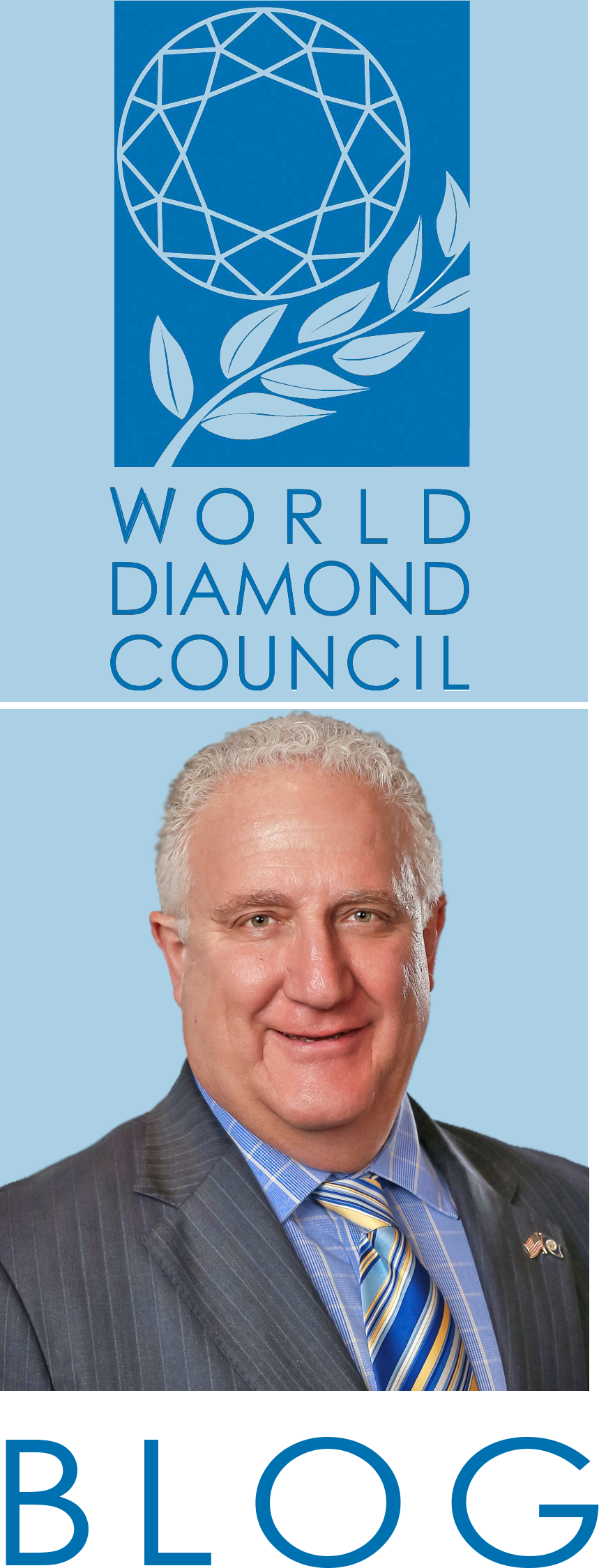Raising the bar for ethical trading in the world’s largest diamond jewelry market
August 29, 2019

By Ronnie Vanderlinden,
WDC Treasurer
When the Kimberley Process Certification Scheme (KPCS) was launched officially on January 1, 2003, it created for the first time in our industry’s history an ethical threshold that could be universally enforced. While limited to rough diamonds involved in the financing of civil conflict, it was fair to say that the Rubicon had been crossed. A network of governments, with the full support of industry and civil society, had ruled that from that point forward only diamonds meeting a minimum standard could be traded legitimately.
But already then, the World Diamond Council (WDC) decided to raise the bar. While the KPCS applied to only to rough diamonds, the WDC’s System of Warranties (SoW) extended the non-conflict guarantee into the polished diamond sector. While voluntarily applied, the SoW declaration became a standard feature on B2B invoices and memos issued throughout the trade.
Although still under discussion, the KPCS’s legal definition of conflict diamonds has not changed in the past 16 years, but the WDC has raised its bar even higher. In June 2018, our Board of Directors approved a revised SoW, which in addition to the statement on invoices and memos that the goods being sold are in compliance with the KPCS, now also includes a commitment that the buyers and sellers adhere to WDC Guidelines. These support international conventions on human and labor rights, anti-corruption and anti-money laundering.
The rollout of the revised SoW will take some time. WDC currently is creating a toolkit based on self-assessment questionnaires, which take into consideration the stage or stages of the diamond and jewelry value chain in which an industry member is involved, and whether the member is already compliant with even more stringent due diligence systems, like that of the Responsible Jewellery Council (RJC).
In the United States, which with more than half of all sales made each year in terms of value is the world’s largest diamond jewelry market, the expansion of the SoW is a massive undertaking. According to the Jewelers Board of Trade, there were about 25,100 jewelry companies active in the nation in 2018, of which about 3,600 were wholesalers and 2,500 manufacturers. The business as a whole provides employment to about 165,000 individuals.
Our goal as American industry leaders is to ensure that all suppliers in the chain of distribution implement and comply with the SoW, and that retailers insist on purchasing only from diamond and diamond jewelry vendors that include a full SoW declaration on their invoices.
Fortunately, we are well equipped to meet the challenge. As President of the Diamond Manufacturers and Importers Association of America and as the immediate-past President of the U.S. Jewelry Council, which brings to together 16 representative industry bodies, including all major players in the country’s diamond sector, I am confident that we have the tools and organizational capacity to reach, engage and educate our diverse community across the country.
Our goal is a crystal clear. We want American jewelry consumers to feel confident that the diamonds they purchase are not in any way ethically compromised, and also are providing sustainable opportunities to literally millions of individuals and thousands of communities in the countries in which they were sourced.



